However, the design of some LED lights can often make them look like they have a filament when in reality, they don’t. Rather than ” burning out,” LEDs slowly and gradually dim over time.
In this article, I will discuss why this would happen and how to prevent it from happening!
Reasons for Light Bulbs Burn Out
Excessive Voltage at Home
Most homes have a standard voltage of 120 volts which is generally safe for most appliances and devices. However, if your home has a higher voltage, it can cause a bulb to overheat and eventually burn out.
High voltage stresses the bulb filament, causing it to break down more quickly.
To prevent this, you can have an electrician check it out or use a surge protector to help protect your devices from high voltage spikes.
Excessive Fixture Vibration
If your light fixtures are subject to excessive vibration, it can cause the filament in your light bulb to break. And this is most likely to happen with ceiling fixtures or recessed lights installed in an area with a lot of foot traffic (like a kitchen or bathroom).
You can prevent this by securely fastening your fixtures to avoid loose connections.
Depressed Socket Tab
The metal tab sticking out from the bulb socket is there for a reason – it holds the bulb in place and ensures good contact with the socket to deliver electricity.
However, over time these tabs can become bent or pushed down, which causes the bulb not to make contact with the socket correctly, leading to an intermittent connection.
Unsuitable Type of Bulb
Using the wrong bulb type in a fixture can also cause premature failure. For example, using a CFL (compact fluorescent lighting) in an institution designed for incandescent lights will likely cause the CFL to burn out prematurely. So, check the type of bulb required for your institution before purchasing replacement bulbs.
Short Circuit
A short circuit occurs when there is an improper connection between two electrical conductors. When this happens, the electrical current takes an unintended path causing the light bulb to go dark.
Wattage Is Too High Light Fixture
Using a bulb with too high of wattage can create excess heat damaging the fixture or causing the bulb to burn out prematurely. So check the maximum wattage rating for your institution, and don’t over it.
Insulation of Recessed Lights
Insulation around the lights’ fixture can block airflow, which then causes the lamp to overheat and start a fire. So you should ensure that your recessed light fixtures are IC-rated or build a box around the fixture housing to provide a proper space.

Recessed ceiling LED light.
Improper Type of Dimmer Switch
Using a dimmer switch incompatible with your lightbulb can cause it to overheat and burn out prematurely. For example, using a dimmer switch designed for standard incandescent bulbs with CFL or LED bulbs can damage the circuitry at the bottom of the bulb and cause it to burn out quickly.
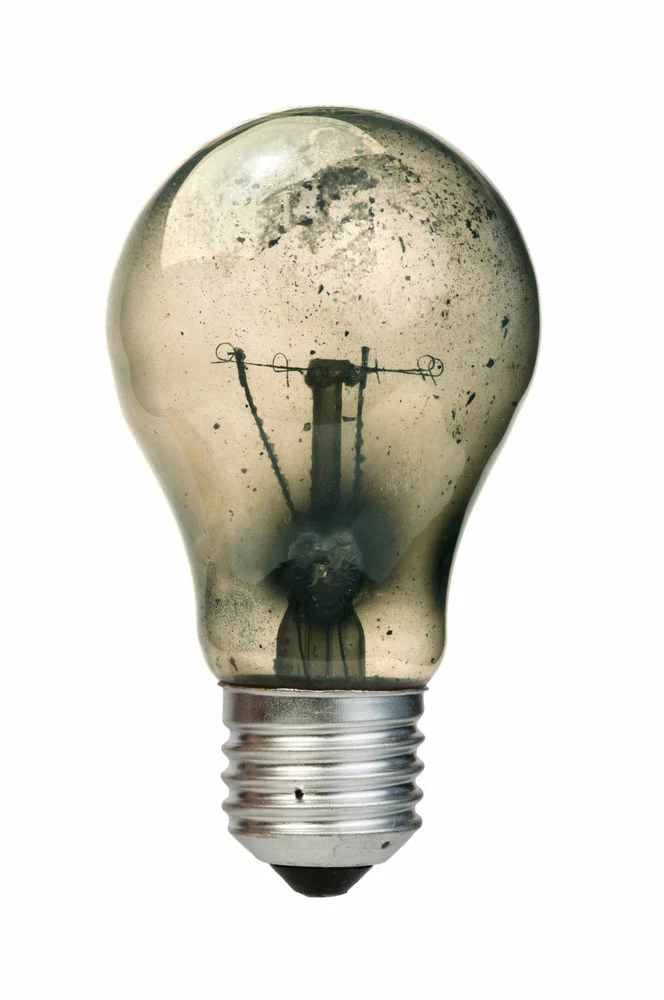
Burned-out light bulb
How long Can You Keep a Light Bulb on until It Becomes Unsafe?
While the lifespan of a light bulb depends on several factors, such as the bulb’s type and quality, an efficient LED bulb can last considerably longer than any other type. With an average lifespan from 25,000 to 50,000 hours, that translates to around 22 hours of safe use per day.
Can LED Light Bulbs Burn out?
LED lights do not have a filament like incandescent bulbs and, therefore, won’t “burn out” in the traditional sense. Still, they fade or cease to work correctly over time. However, since they have a longer lifespan than conventional bulbs, you are less likely to experience this issue.
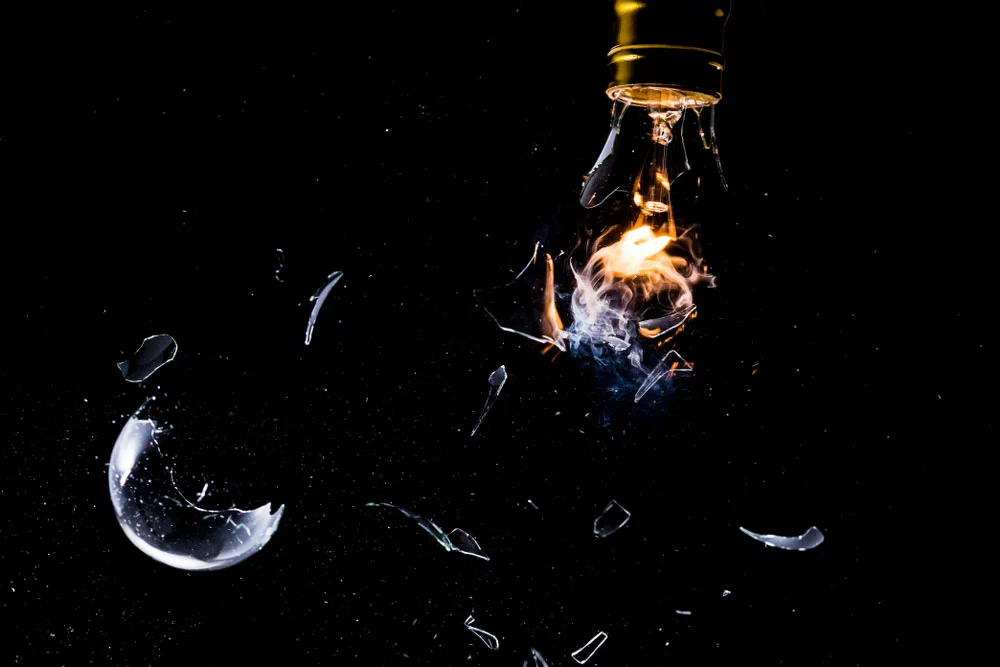
A light bulb shattering while lit
How Can You Extend the Life of Your LED Light Strip?
Here are some tips on how to preserve the life of your LED light strip:
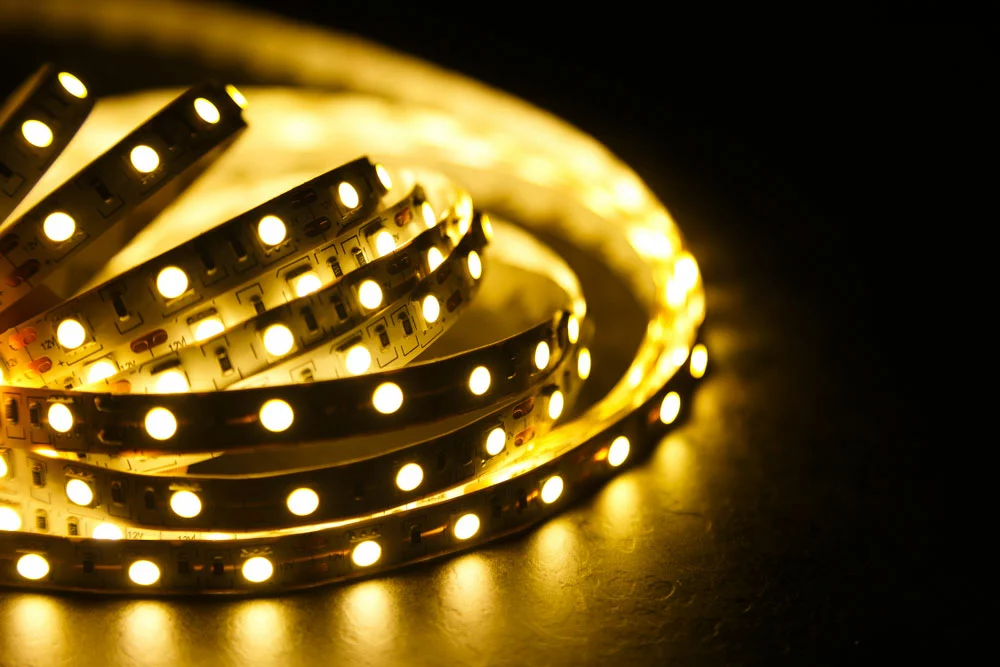
LED Light Strip
Don’t Leave Them On
It’s essential to give your LED light strips a break now and then. Leaving them on for long periods will shorten their lifespan, so it’s best to turn them off when you’re not using them.
Install Correctly
Any bending, kinking, or stretching of the light strip can damage the internal circuitry and shorten its lifespan. So, be sure to handle the light strips with care and avoid any sharp bends.
Safety Listings
When purchasing LED light strips, look for safety listings from organizations like UL, CSA, and ETL. These listings ensure that the product has been tested and meets specific safety standards.
Don’t Cheap Out
Cheap LED light strips may use lower-quality materials that can impact the product’s lifespan. So, it’s essential to do your research and purchase from a reputable brand.
Simple Steps to Restore a Burned-Out LED Light
- Look at the LED for damage and if there is no visible damage, use a voltmeter to test the LED.
- If the voltage exceeds 1.5 volts, use a soldering iron to reattach any leads of the burned-out led and then solder new leads onto the circuit board.
- If the voltage is below 1.5 volts, use a hot glue gun to attach a new LED to the circuit board.
- Reapply power to the circuit and test the LED.
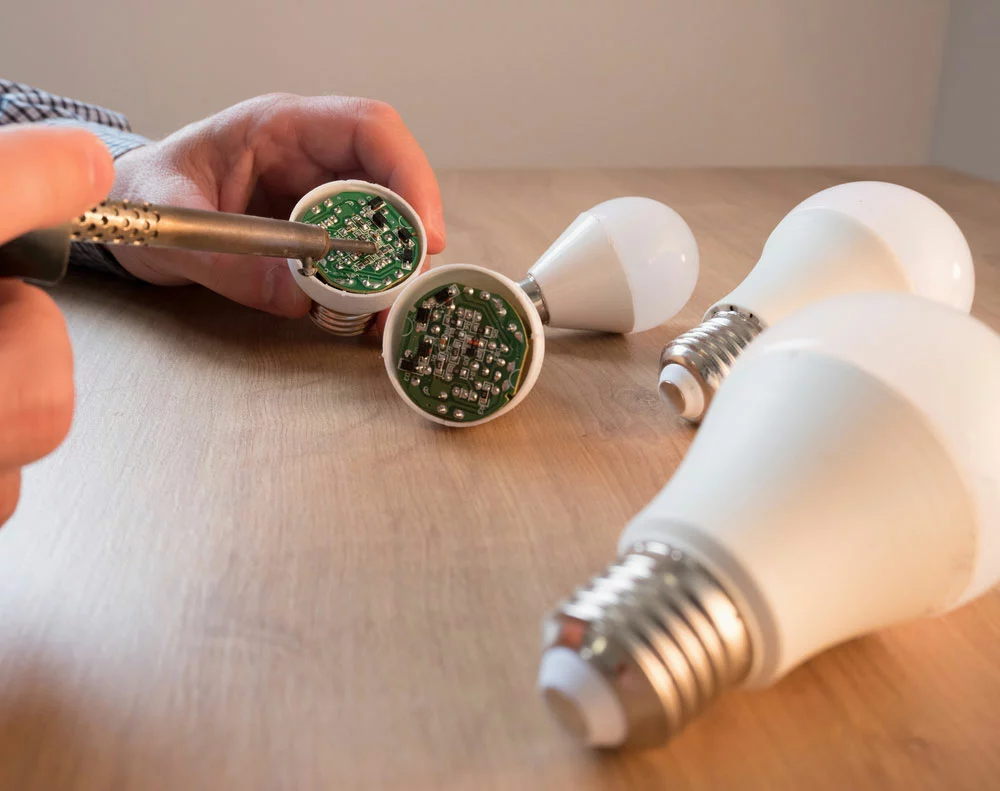
Solder the bulb leads
FAQ
Why Do LED Strip Lights Discolor And Turn Yellow Over Time?
The answer lies in the epoxy coating of the LED. This coating starts to turn yellow over time due to the heat and UV radiation from the blue light of the diode.
In other words, the encapsulate will end up brown, leading to a less attractive light display.
Is It Safe to Leave LED Lights On All Day and Night?
You can leave LED lights on around the clock without harming the environment or the LED lights themselves. However, doing so would be a waste of finite resources.
Can You Keep Your Christmas Lights on All Night Long?
Traditional Christmas lights’ design didn’t allow for more than a few hours at a time. Newer LED Christmas lights are much more energy-efficient. You can leave them on for extended periods without damaging the bulbs or causing an excessive energy bill. However, it’s better to turn these lights off when no one is home to enjoy them.
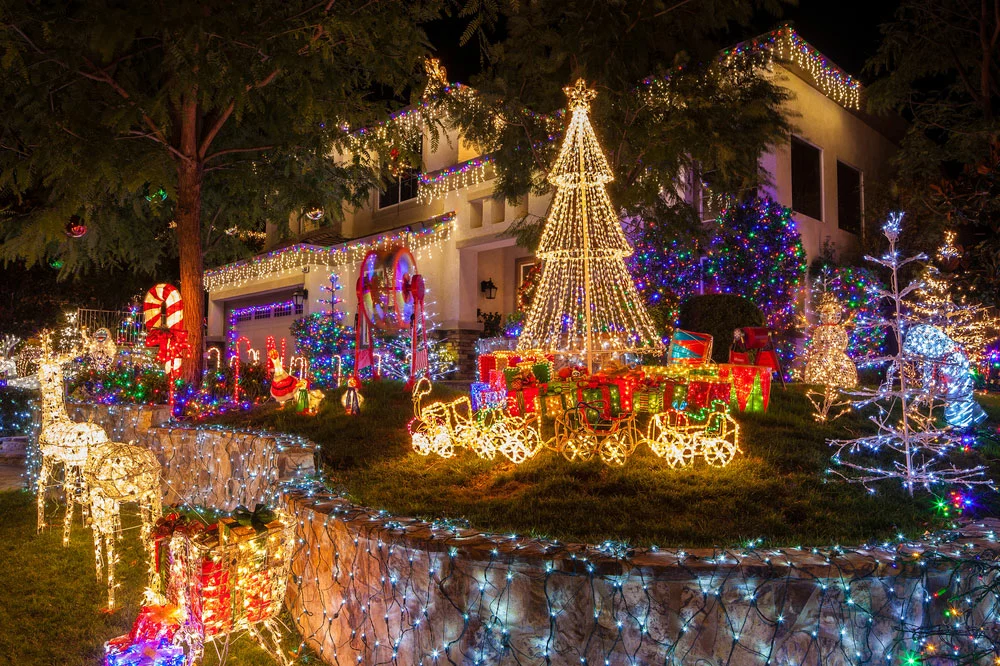
Christmas lights
Summary
In short, LED lights don’t burn out like traditional incandescent bulbs. However, they can stop working correctly after a certain amount of time.
I hope you found this article helpful. To preserve your LED light strip’s lifespan, handle them carefully, avoid leaving them on for long periods, and purchase from a reputable brand. If you have any questions, feel free to contact us.
